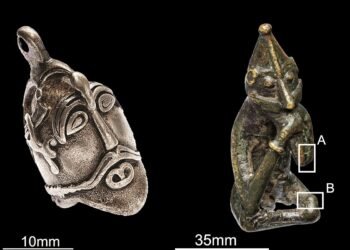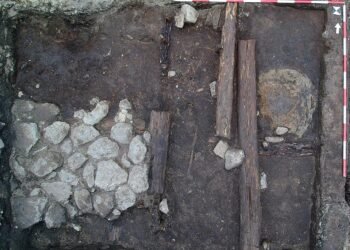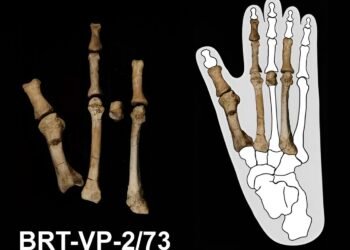A team of researchers have discovered that steel tools were used on the Iberian peninsula around 2900 years ago – much earlier than previously thought.

The team, led by Dr. Ralph Araque Gonzalez of the University of Freiburg, build their claims on geochemical and metallographic analyses, and some good old-fashioned experimental archaeology.
The researchers were able to prove that a series of engravings on stone pillars on the Iberian peninsula from the Final Bronze Age feature complex engravings that could only be done with tempered steel.
This is supported by metallographic analyses of an iron chisel from the same period discovered at Rocha do Vigio. The results from the analyses of the chisel, reveal that it consists of heterogeneous yet astonishingly carbon-rich steel.
To confirm their findings, the researchers conducted an experiment involving a professional stonemason, a blacksmith, and a bronze caster in which they attempted to work examples of silicate quartz sandstone using chisels of different materials.
The stonemason was unable to work the stone with the stone and bronze chisels, or even with an iron chisel with an untampered blade. Only the tempered steel chisel was capable of engraving the stone.
Until recently, it was believed that it was not possible to produce suitable grade steel in the Early Iron Age, and certainly not in the Final Bronze Age and that it became widespread in Europe only under the Roman Empire.
“The chisel from Rocha do Vigio and the context where it was found show that iron metallurgy including the production and tempering of steel was probably indigenous developments of decentralized small communities in Iberia, and not due to the influence of later colonization processes,” explains Dr. Gonzalez.
“This also has consequences for the archaeological assessment of iron metallurgy and quartzite sculptures in other regions of the world.”
The Iberian Bronze Age began around 1800 BC and ended in the 9th century BC with the Iberian Iron Age.
The study’s findings were published in the Journal of Archaeological Science.
More information: Araque Gonzalez, A., et al. (2023). Stone-working and the earliest steel in Iberia: Scientific analyses and experimental replications of final bronze age stelae and tools. Journal of Archaeological Science (152), 105742. doi:10.1016/j.jas.2023.105742























